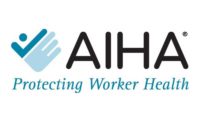Healthier workforces may lead to a healthier bottom line
Study suggests link between “culture of health” and financial performance

 Companies that build a culture of health by focusing on the well-being and safety of their workforce may yield greater value for their investors, according to a study published in the September issue of the Journal of Occupational and Environmental Medicine (JOEM), official publication of the American College of Occupational and Environmental Medicine (ACOEM).
Companies that build a culture of health by focusing on the well-being and safety of their workforce may yield greater value for their investors, according to a study published in the September issue of the Journal of Occupational and Environmental Medicine (JOEM), official publication of the American College of Occupational and Environmental Medicine (ACOEM).
The stock market performance of companies that had received ACOEM’s Corporate Health Achievement Award (CHAA), which annually recognizes the healthiest and safest companies in North America, was conducted at HealthNEXT LLC and analyzed by lead authors Raymond Fabius, MD, and R. Dixon Thayer, and colleagues. Companies that receive the award must be engaged in demonstrable and robust efforts to reduce health and safety risks among their employees.
Four scenarios, same result
Tracking an initial theoretical investment of $10,000 in publicly traded CHAA-recipients from the mid 1990s to 2012, researchers found that these award-winning CHAA companies outperformed the S&P 500. Four investment scenarios were created, using a combination of simulations and past market-performance to create investor portfolios for comparison. While the margin of return varied, CHAA recipients outperformed the market in each of the four scenarios.
In the highest-performing scenario, CHAA companies had an annualized return of 5.23% vs. −0.06% for the S&P 500. In the lowest-performing scenario, CHAA companies had an annualized return of 6.03% vs. 2.92% for the S&P 500.
Focusing on workforce is "good business"
“Our results strongly support the view that focusing on health and safety of a workforce is good business,” said the study authors. “Engaging in a comprehensive effort to promote wellness, reduce the health risks of a workforce, and mitigate the complications of chronic illness within these populations can produce remarkable impacts on health care costs, productivity and performance.”
The authors acknowledge that the study focuses on the performance of a small collection of companies on the stock market for a limited number of years, and that more research is needed before a strong causal relationship can be established between health and safety programs and market results. But they conclude that the study adds new evidence-based data to a growing body of literature indicating that “healthy workforces provide a competitive financial advantage in the marketplace.”
“Although correlation is not the same as causation, results consistently and significantly suggest that companies focusing on the health and safety of their workforce are yielding greater value for their investors,” the authors write.
ACOEM’s Corporate Health Achievement Award was created in 1996 as a part of ACOEM’s global efforts to promote better health, wellness, and safety in the workplace. Since 1996, 29 companies have been recognized for their achievements after undergoing a rigorous evaluation by health experts that included on-site visits and extensive program documentation. Winning companies demonstrate that they have made considerable investment into the health, safety, and wellness of their workforces. Today, the CHAA is one of the key programs in ACOEM’s comprehensive Healthy Workforce Now initiative, which provides tools, resources and research to help employers implement create a true culture of health for their employees.
Citation — Fabius R, Thayer RD, Konicki DL, et al.The link between workforce health and safety and the health of the bottom line: tracking market performance of companies that nurture a “culture of health.”J Occup Environ Med. 2013;55(9):993-1000.
The ACOEM represents nearly 4,500 physicians specializing in occupational and environmental medicine.
Looking for a reprint of this article?
From high-res PDFs to custom plaques, order your copy today!









